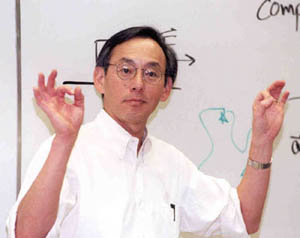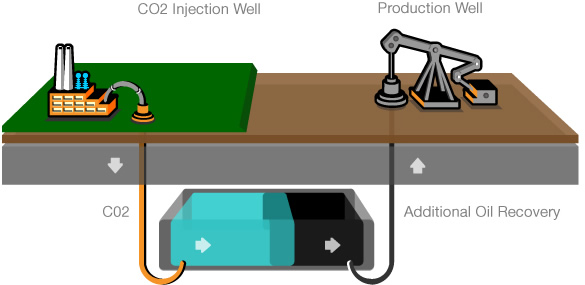December 18, 2013 – Carbon capture and sequestration or CCS has challenged those attempting to make economic sense of its many different technologies. So far most CCS projects have proven to be very expensive and have been heavily subsidized by governments.
A Canadian company, Inventys Thermal Technologies Inc., is bucking the trend in developing a technology that is less expensive to implement and shows considerable promise. So much promise in fact that the former U.S. Secretary of Energy under President Obama has decided to join the company’s board of directors.
Dr. Chu is currently the Director of Physics at Stanford University. In the press release issued by Inventys, located in Burnaby, British Columbia, Dr. Chu is quoted as saying, “Carbon capture is a critical technology to move us to a clean energy future and Inventys has developed a practical, compact, and low cost system that allows existing fossil fuel power plants to dramatically lower their carbon emissions.”
Inventys’ proprietary system is called Veloxo Therm(TM). It uses less energy to capture carbon, costs 80% less than competing technologies, and has a much smaller form factor when deployed in power plants.
The technology is attached to the flue stack where it uses a rotating structure to trap CO2 from gas emissions going up the chimney. Steam is then applied to release the CO2 so that it can be pumped underground. Veloxo Therm runs at relatively low temperatures and pressures and has little impact on the operating efficiencies of power plants where it is installed.
The technology is being deployed at a Nova Chemicals plant operating in Joffre, Alberta. The captured CO2 will be used for enhanced oil recovery extending the life of production wells. This seems to be where CCS can play for the moment.



















Are you aware that several years back Shelby Brewer, Michael Jorden, and a retired Air Force general were all on the board of Black Light Power? During the last 20-years Black Light Power has made all kinds of announcements about hydrino power, and contracts with commercial power cpmpanoes, but so far they have produced about as much excess energy as Rossi’s E-cat.
Dr. Chu is being paid to lend his famous name to a problematic enterprise. The promoters expect that Chu’s government contacts and influemce will lead to swill hog government mandates and subsidies. The company’s web site talks about how wonderful the technology is, but they can’t tell us exactly how it works or provide us with actual numerical analysis. It’s over-hyped without any real technical substance. They need Chu because they can’t make a compelling technical demonstration of the secret “proprietary process.” If they could actually make the demonstration, they wouldn’t need to puff up the board with Chu. Don’t bet much on this one. The numbers will never add up to anything that could actually make a significant dent in the carbon buildup problem. But government intervention in North America requiring carbon sequesteration might produce significant energy cost increases, loss of jobs, profits for Inventys, and economic ascendancy of China and India.
I’m not sure your conclusions are the correct ones. Although conventional CCS technology is a non-starter, what Inventys has demonstrated in pilot projects shows that it is on to something. And the fact that the first commercial site is an enhanced oil recovery project where the CO2 will replace oil in a reasonably sealed reservoir may prove to be attractive to older field operators who when legislated to reduce carbon levels will see this as meeting two objectives.
((And the fact that the first commercial site is an enhanced oil recovery project where the CO2 will replace oil in a reasonably sealed reservoir may prove to be attractive to older field operators who when legislated to reduce carbon levels will see this as meeting two objectives.))
But the telling economic fact is the value of the oil pays for the CO2 sequestration. The oil that is produced will be burned as transportation fuel to produce new atmospheric CO2 within 6-months. Before the sequestration boondoggle scheme attempts to capture the power plant CO2, the carbon is already sequestered in the form of underground coal and natural gas.
The burned transportation fuel CO2 will not be sequestered. The number of suitable oil fields for receiving the power plant CO2 are trivial compared to the amount of CO2 produced at power plants. The major CO2 problem is in China and India. There, they are burning mega tons of coal daily to produce most of the electricity, and the more electricity they produce the more productive their economies become, so more coal will be burned to meet the electrical demand produced by the growing economies, which will then hugely increase demand for vehicles and transportation fuels. The underground tertiary recovery oil field sequestration scheme is a boondoggle that will increase, not reduce atmospheric CO2. But North Americans will have to pay more for electricity, which will reduce productivity and more jobs will be lost. It’s worse than Oswald Spengler ever imagined.
Nuke plants don’t emit much CO2. While Stephen Chu was US Energy Secretary, not a single new smaller safer cheaper nuke plant design was licensed for commercial application. How many new prototype fission reactor designs are running and undergoing testing at Idaho National Labs? Sequestration is a frank admission by government that we will continue to get our power and transportation energy by burning carbon based fuels. Hence global CO2 levels will continue to rise at ever increasing rates.
I think you know that the whole nuclear industry has been on the sidelines for well over a decade with little momentum towards building the next generation technology. A lot of this has to do with poor salesmanship by the industry itself. A lot has to do with a regulatory environment that is tedious to a fault. And a lot has to do with public perception that nuclear is great until an accident like Fukushima happens.
<>
If nuclear power is so hazardous, why doesn’t the government decommission its scores of naval reactors? If the naval reactors are safe, why aren’t we building them for commercial power production?
It is the responsibility of senior political leadership, not private industry or private capital to shape public perception and chart an environmentally sound energy policy. Many private companies had developed and promoted much safer reactor designs, but found government hostile to any rational system of licensing, testing, and implementation. Government even strangled Silex, which promised to cut fuel costs for new design fission reactor by a factor of 3-6. That happened under Chu’s watch. I never heard that he resigned in protest or launched any public relations campaigns for numerically compelling alternatives to burning carbon fuels.
It doesn’t matter what the politicos say; just watch what they do. All the silly jibber jabber about feel-good salvation from CO2 sequestration will have zero impact on the ever-increasing emissions in China and India. The CO2 buildup war is now lost. Baring some unexpected new carbon neutral energy technology or catastrophic population crash, the next 50-years should add another 400 ppm CO2 to the atmosphere. If the global climate modelers have been anywhere close to correct, that should be enough to trigger avalanche release of the Arctic methane presently trapped in permafrost and hydrates.